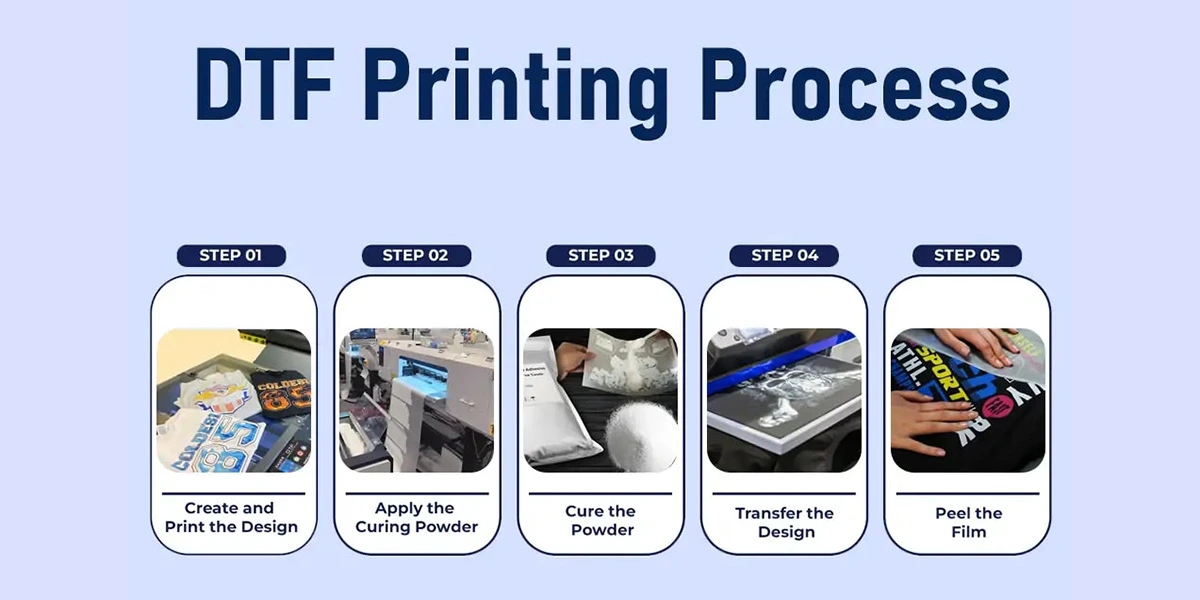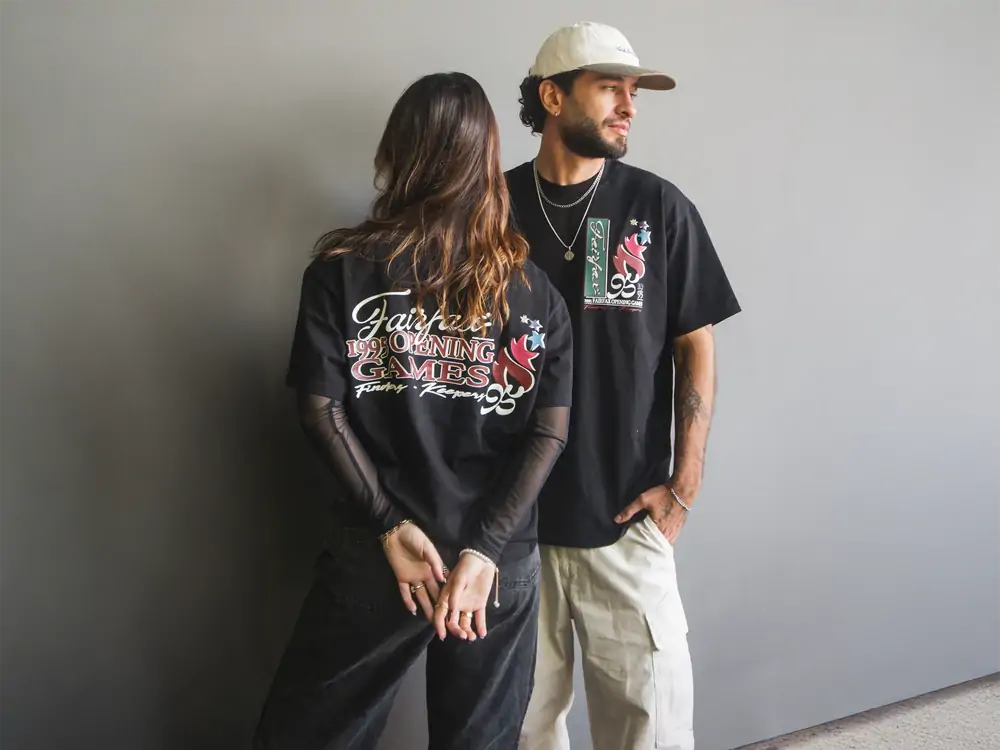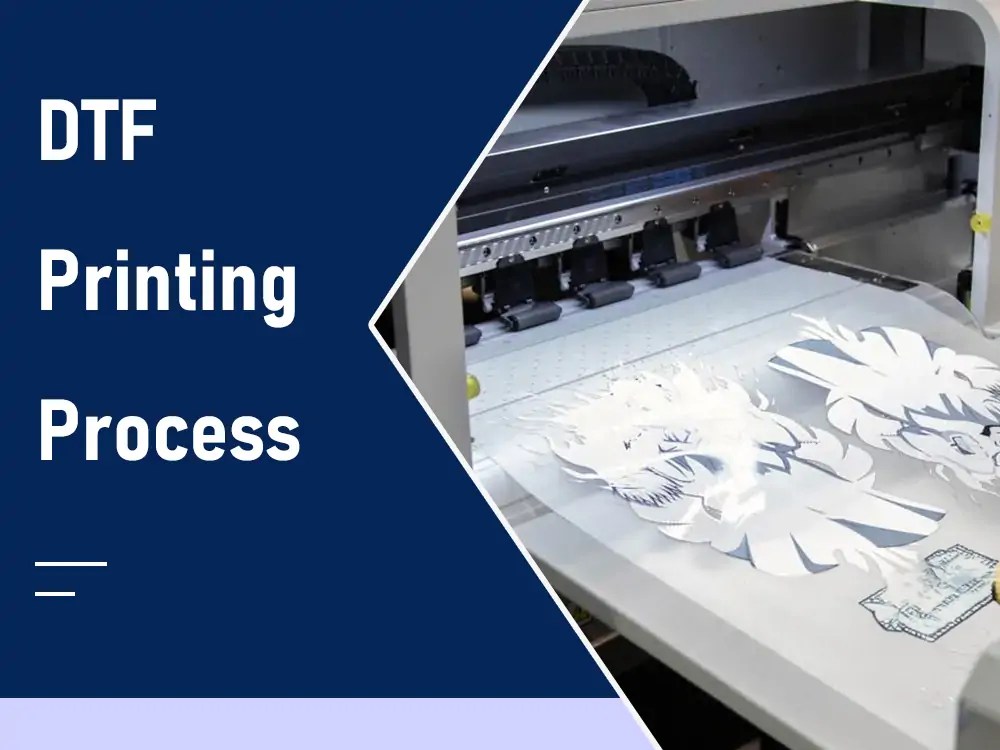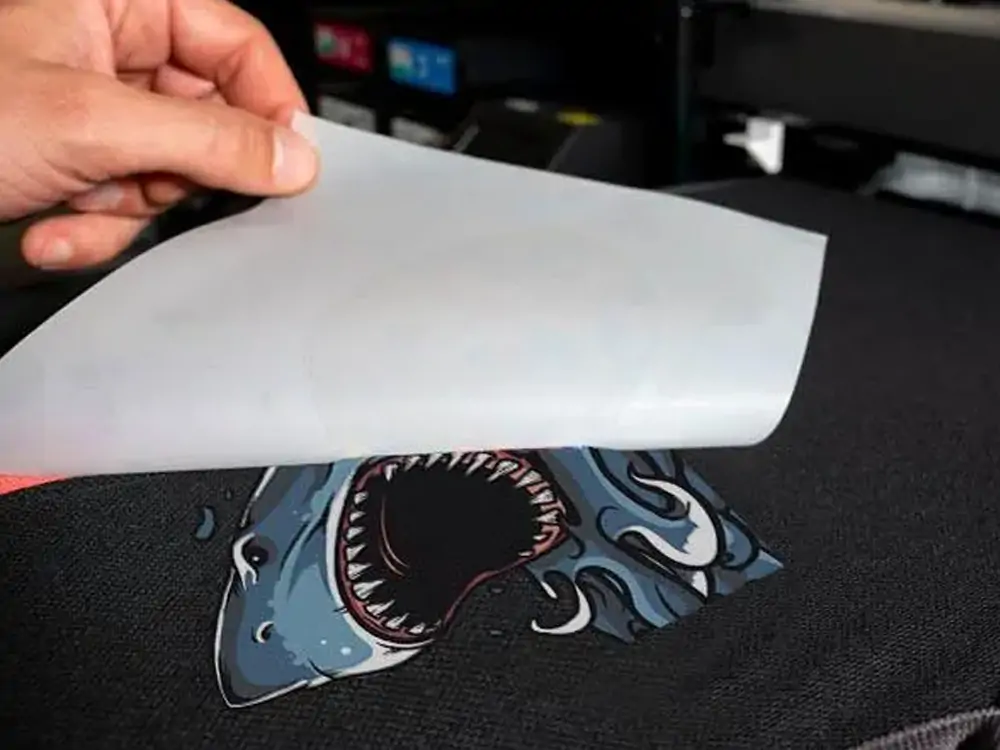
Direct-to-Film Printing Process - Step by Step Guide
The process of fabric printing has undergone significant changes over the past decade. The process is not as tiring as it was in the past, and it does not require a lot of labor to accomplish the task. Now, you can print fabrics and other materials using this technology. Here is a detailed description of the process, including the prerequisites, requirements, and equipment needed for DTF printing.
What is DTF printing?
As the name suggests, the printing process involves the direct transfer of the print from a film to the desired surface, such as fabric or nylon. A detailed print, featuring vibrant colors and sharp details, was transferred to the film. The prepared print can now be transferred to the substrate or the fabric that needs to be printed. With DTF printing, a large range of materials can be printed. A small business owner can print on a variety of materials, including polyester, nylon, silk, and cotton.

What are the requirements for DTF printing?
In the fabric printing industry, investing in printing methods is a fundamental necessity. For businesses looking to transition to a modern printing method, such as DTF, they must invest in the following equipment.
DTF printer
A DTF printer is slightly modified from a normal printer. These printers use a combination of six colors. Cotton and silk are among the materials that these DTF printers can print on. The DTF printer does not require expensive A&B paper to transfer the print to the substrate. There are different ink tanks available for six colors: Epson L805, L1800, and L800, respectively. The standard tanks contain these inks, including White DTF inks, which are used as a base coat and are filled in the LC and LM tanks of the printers.
DTF film
Designs created by the DTF printers are transferred to the fabric by using a special kind of film. The DTF printing process uses PET films that are around 0.75mm in thickness. Manufacturers can obtain detailed and fine prints due to the extreme thickness of the film. These films are available in the form of cut sheets for smaller fabric prints and in the form of rolls for large-scale prints. Furthermore, these sheets are classified based on their tendency to peel after printing. They are either hot-peel type or cold-peel type films.
Software
A DTF printer uses a specialized RIP (Raster Image Processor) software. This software can handle all the processes on the computer, ranging from making print designs to adjusting the resolution and maintaining the colors by combining different inks. Software is a basic need for DTF printing, which helps you maintain the ink drop sizes, ink level, and color combination that can lead to the formation of a flawless print on the fabric surface.
Hot melt adhesive powder
A white granular powder is used to paste the print film onto the fabric; it may be of different microns in size and selected according to the fabric type. After the printing process is complete, the DTF powder is sprinkled onto the surface, which is then further adjusted by a hot gun or press. All color pigments can be printed directly onto the fabric surface using DTF. The experts’ advice should be followed while adjusting the temperature and time.
DTF ink
DTF printing utilizes specialized inks that produce a vibrant and detailed image. The printer uses specialized water-based inks, known as CMYK DTF inks, which consist of Cyan, Magenta, Yellow, and Black. These pigments combined to form the whole image. This printing process uses special white ink that acts as a foundation for the colored print.
Automatic powder mixer
An automatic powder mixer or shaker is used for large-scale production. This machine is used to spread an even layer of the adhesive on the film surface and remove the excess.
Heat press
The design or print on the fabric is fixed by using a heat press. A distance of 4 to 7mm is maintained between the heat press and the film. This will melt the powder, which in turn passes the print onto the fabric, and the temperature is maintained at 160 to 170 °C.
Curing oven
A non-contact method of melting the powder spread on the film is by using the curing oven. This oven can be used for small-scale production.
How does a DTF printer work?

A DTF printer is very economical for small businesses. RIP software is used to make the design and to transfer the image to the PET film, which in turn is transferred to the fabric of the T-shirt. People in the customized printing business use DTF-modified printers for their growing business. These DTF printers have different or multiple colored ink tanks, which can handle CMYK settings. Specialized inks are used in these printers that are printed onto the fabric with adhesive powder using the heat press. These kinds of prints do not require rollers for printing, which will provide a smooth finish in the print and avoid the formation of lines on the printed surface. You can print the dark or light color fabric with these printers and get the same results. Along with fabric, these printers can be used to print any material like cotton, nylon, or silk.
Advantages and disadvantages of DTF printing
For commercial or small business use, certain advantages and disadvantages must be assessed before investing.

Advantages
- Any kind of material can be printed with DTF printing, including fabric.
- This method of printing does not require much preparation of the substrate, and the design can be transferred directly to the fabric.
- DTF printing is sustainable as compared to screen and DTG printing.
- Vibrant and detailed prints, with great resistance to washing, are obtained by using DTF printing.
Disadvantages
- Prints are just like stickers pasted on the fabric surface; these are less smooth than the prints by subliminal printing.
- Other printing kinds are long-lasting and result in a smoother surface as the ink absorbs into the fabric.
Conclusion
DTF printing is a quick and versatile way of printing on different materials. It makes it easier with less work and fewer procedures. The prints are vivid, sharp, and long-lasting. It can be applied to various materials, including cotton, nylon, silk, and others. Although the structure is adaptable to both small and large organizations, it does require specific equipment. The technique does not use messy rollers, and it is effective on both dark and light fabrics. The prints are of high quality and durable, though they might be sticker-like. DTF is a time-saving, waste-reducing, and creative approach. DTF is an effective, affordable, and convenient option when it comes to modern textile printing.